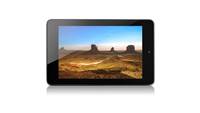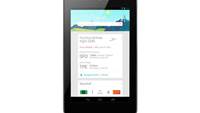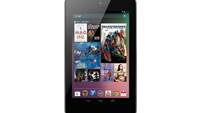Google has entered the tablet market by itself for the first time, launching the Nexus 7 tablet at its annual I/O developer conference overnight.
Targeted for the home market, and reportedly aimed as a rival to Amazon's Kindle Fire tablet, the search giant's new Android device is the first time it has marketed a tablet with its own branding.
Other tablets based on its Android operating system are usually made and marketed by third party companies such as Samsung. The move follows a similar change in tactic for Microsoft, which unveiled plans to launch its own self-branded tablet last week in a bid to take on Apple's iPad.
Google is yet to confirm availability for the Nexus 7 tablet in Australia but references on its marketplace show pricing of either $249 for 8 GB of storage or $299 for 16 GB of storage, with a two-to-three week wait.
The tablet — made by Taiwanese manufacturer Asus — features a 1,280 by 800-pixel backlit display, quad-core NVIDIA Tegra processor and 1 GB of RAM. It also has the full complement of motion and location sensors, compass, 802.11b/g/n wi-fi, and near-field communications technology.
It will come with Android 4.1 'Jelly Bean' operating system, featuring improved search, enhanced location services and recommendations.
Jelly Bean also comes with a new version of the Swype keyboard — allowing users to input text by dragging a finger across the screen instead of typing — and better voice recognition technology to compete with Apple’s Siri.
Near-field communications (NFC) is built into Jelly Bean, for file sharing and connecting with other devices like speakers.
The company concurrently launched its Nexus Q media player, a wireless streaming device controlled by Android phones and allowing a connection to Google’s Play music and video stores, as well as YouTube.
The wirelessly and wired networked Nexus Q has a 12.5 watt per channel amplifier and features a dual-core ARM Cortex A9 processor, 1 GB RAM and 16 GB of storage.
Australian availability is yet to be confirmed for the streamer, which is set to cost $US299.
In a departure from current manufacturing praxis, the Nexus Q would be made in the United States.
Offline maps
Google has also enabled offline caching of maps in its Android application.
Users can select up to six areas on Google Maps and download them to their devices, from 150 countries. Once downloaded, no network connection is required to display the maps in question and to search them, or to use the GPS in the device for location.
Google Maps Mobile software engineer Jiabei Lei said the offline capability is useful for restricting mobile data usage when travelling internationally, or for when users are out of network coverage.
Page MIA
Concerns were voiced by some as to the absence of Google chief Larry Page at the conference and other recent company events.
According to Google, Page lost his voice and won’t be speaking in public for some time.
He will continue to run the company as normal but the paucity of information around Page’s illness has led observers to draw parallels with Apple and its former CEO, Steve Jobs, whose pancreatic cancer was kept secret for years.
Updated: This article previously mention only b and g versions of wi-fi were available on the Nexus 7. This has been corrected to b/g/n variants.









.png&h=140&w=231&c=1&s=0)
_(22).jpg&h=140&w=231&c=1&s=0)



_(26).jpg&w=100&c=1&s=0)

 iTnews Executive Retreat - Security Leaders Edition
iTnews Executive Retreat - Security Leaders Edition










_(1).jpg&h=140&w=231&c=1&s=0)



